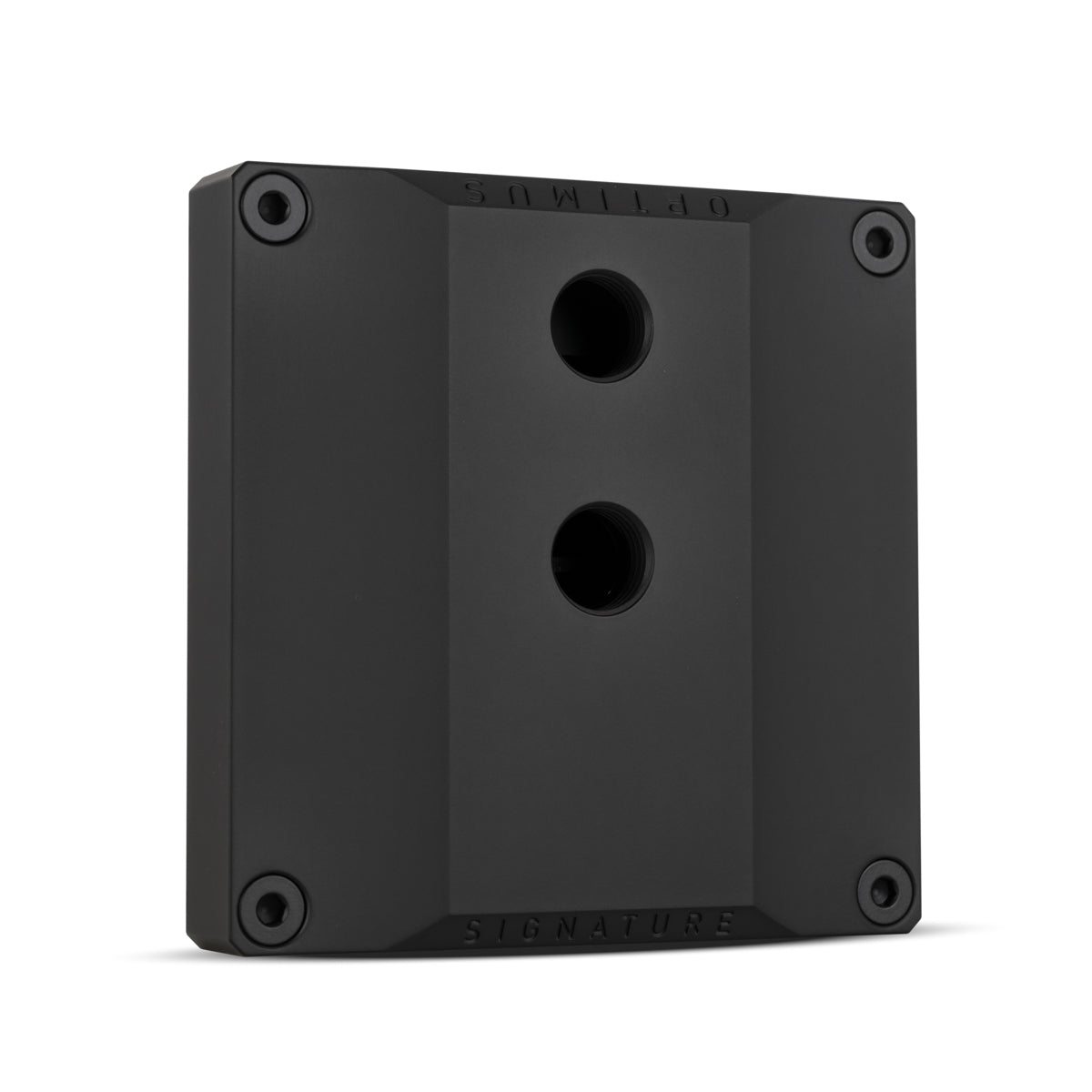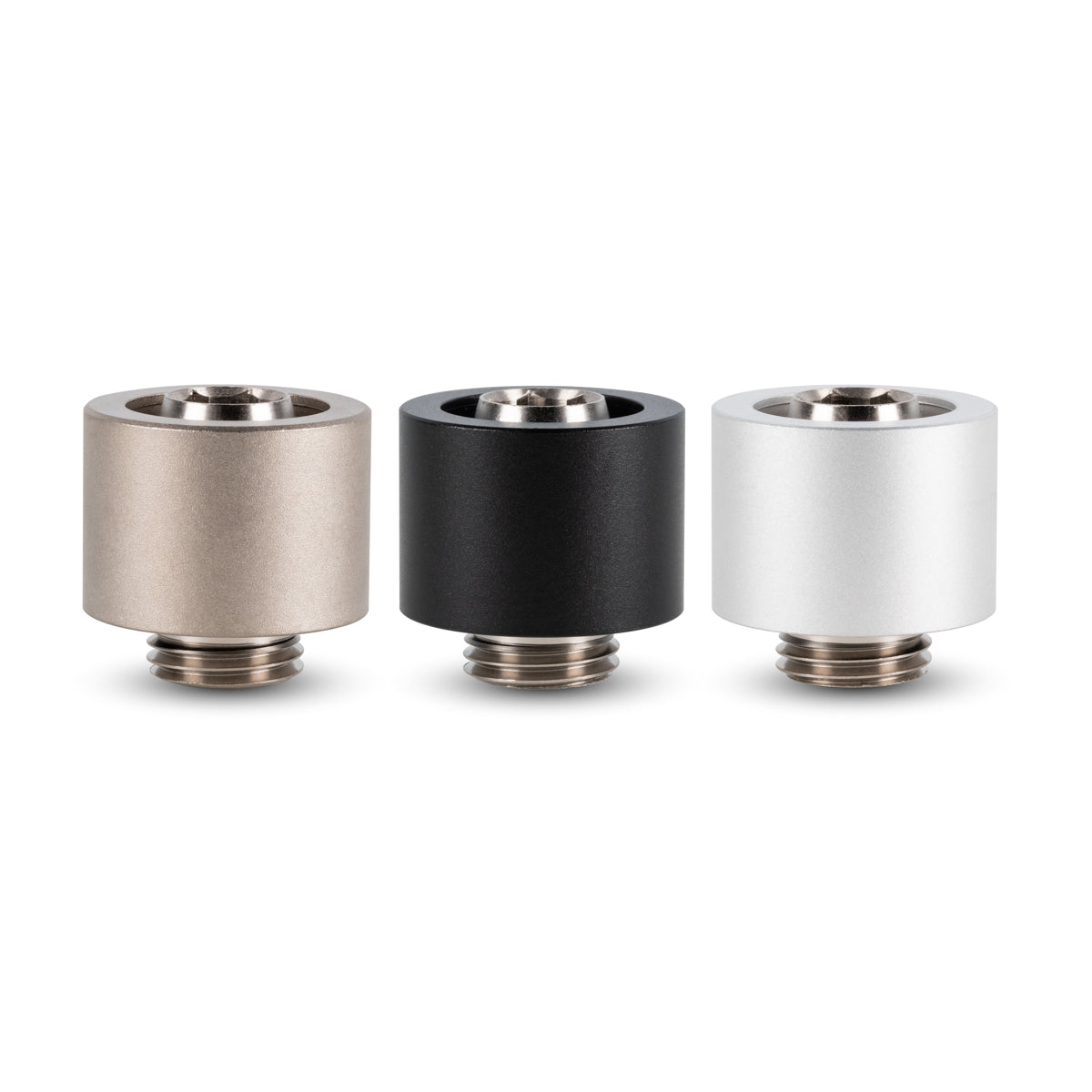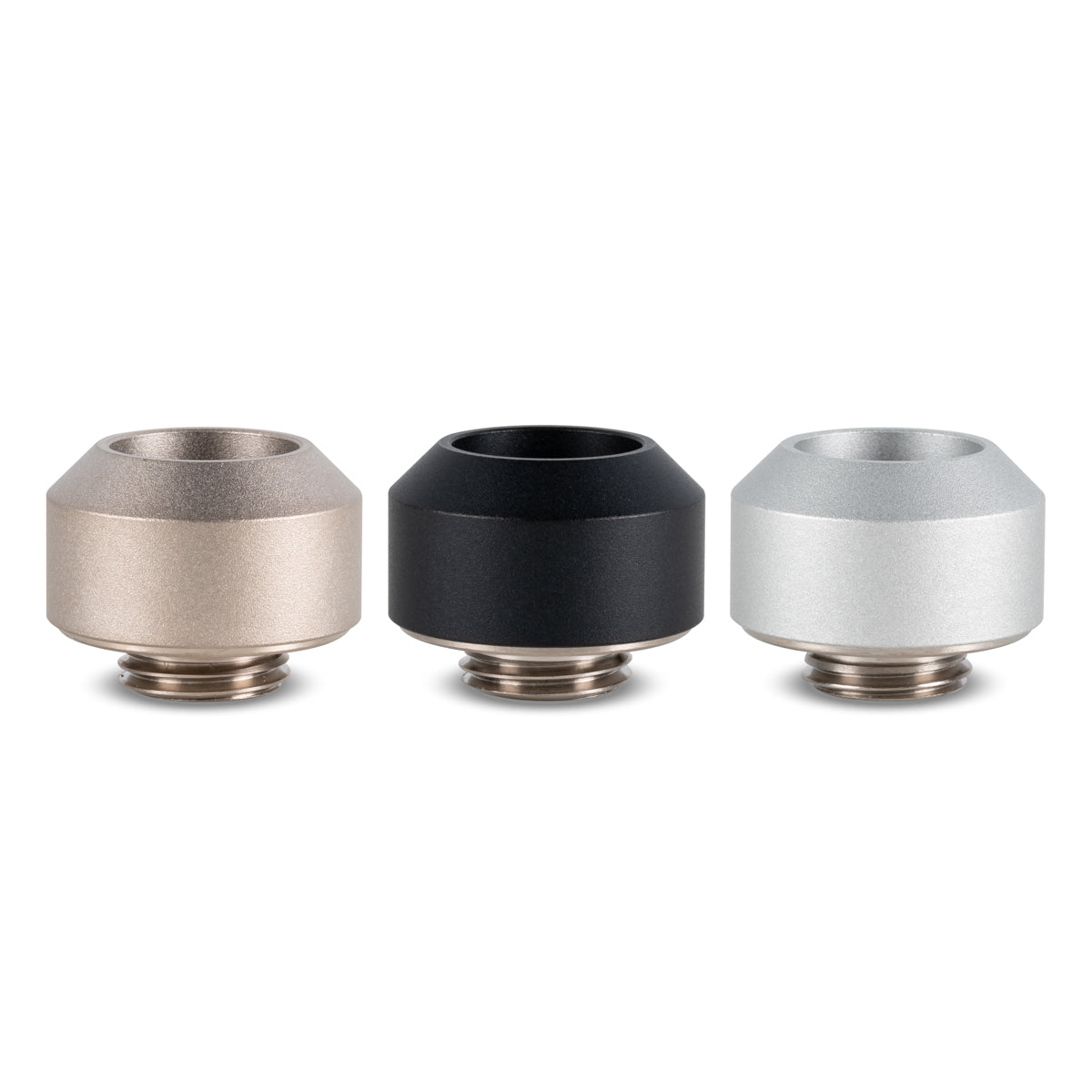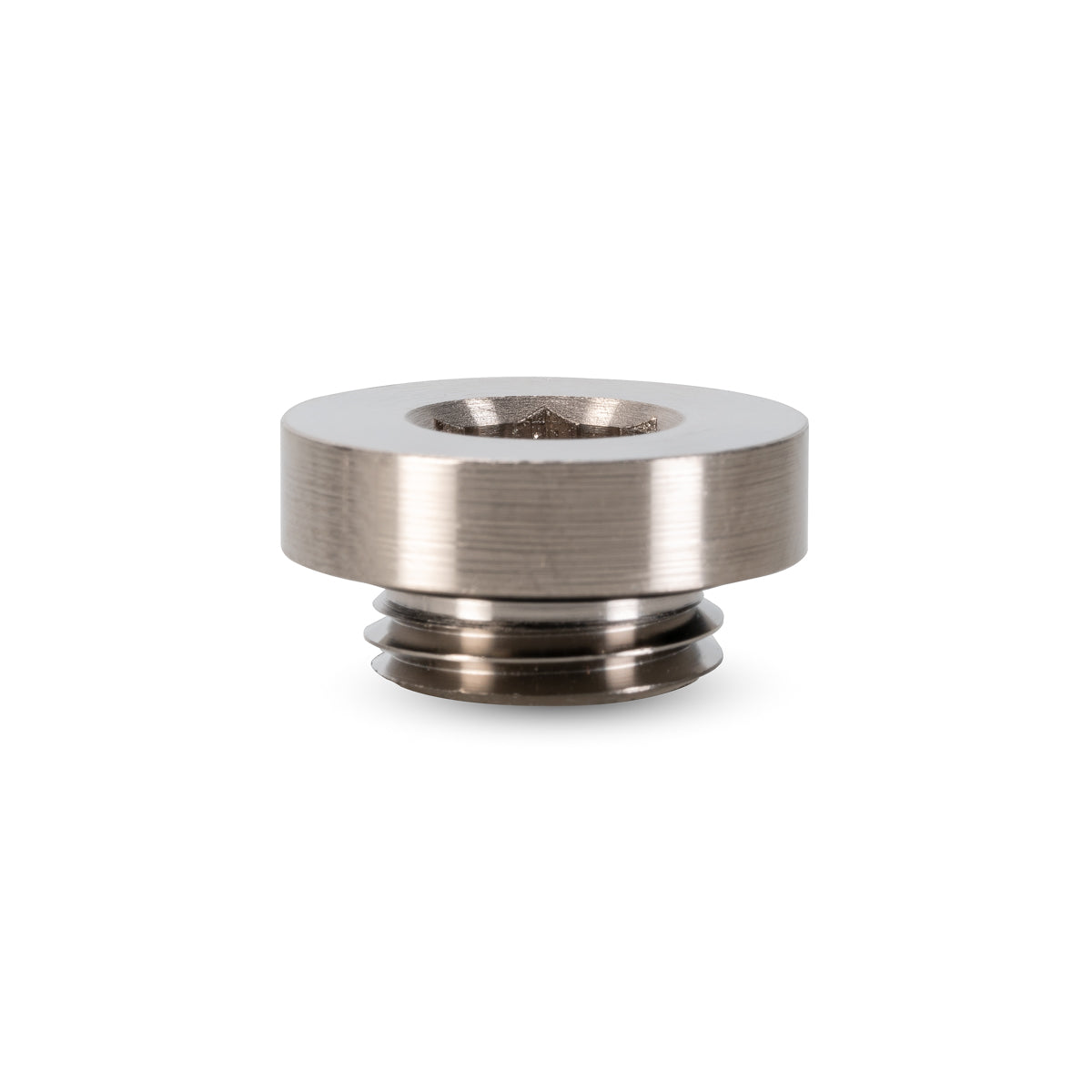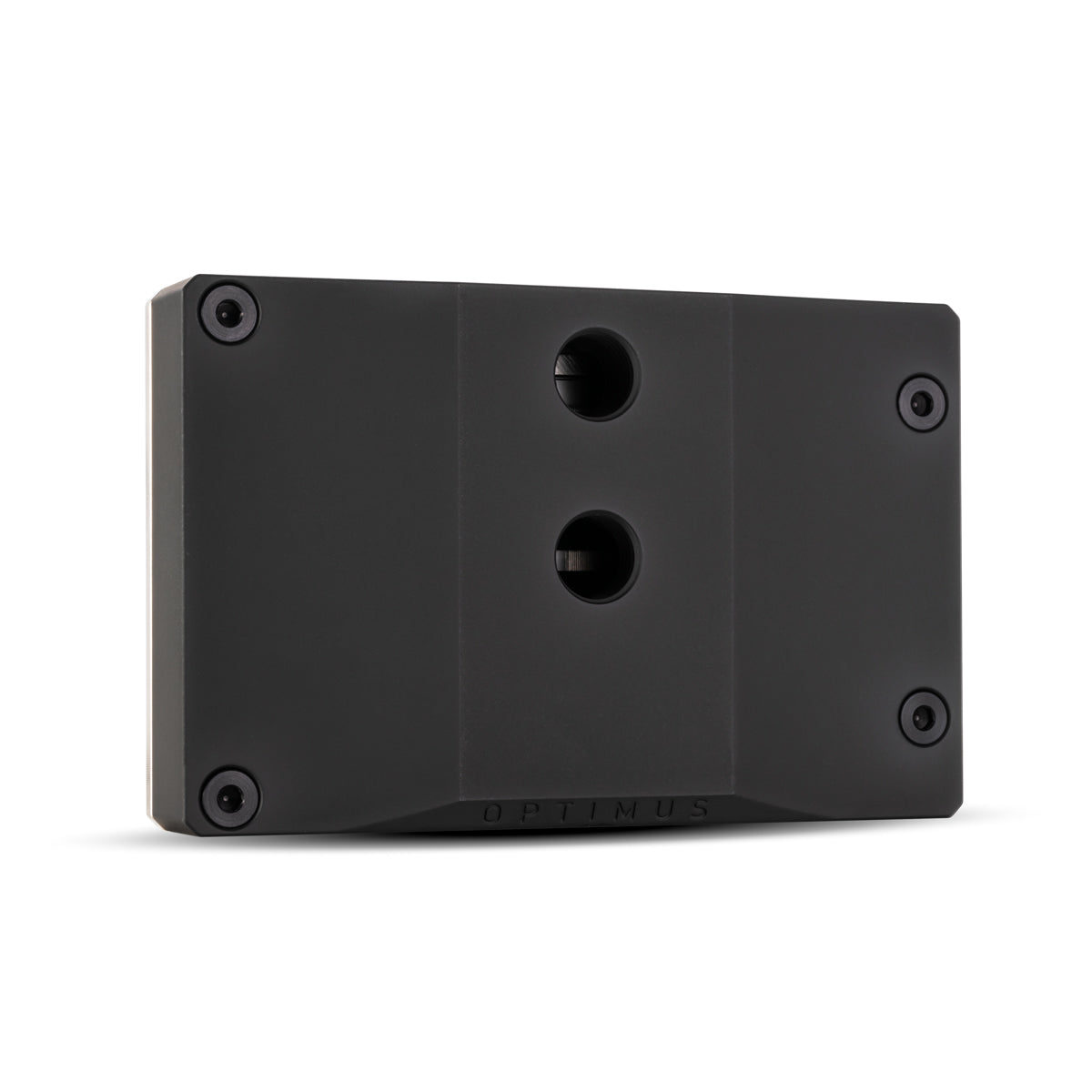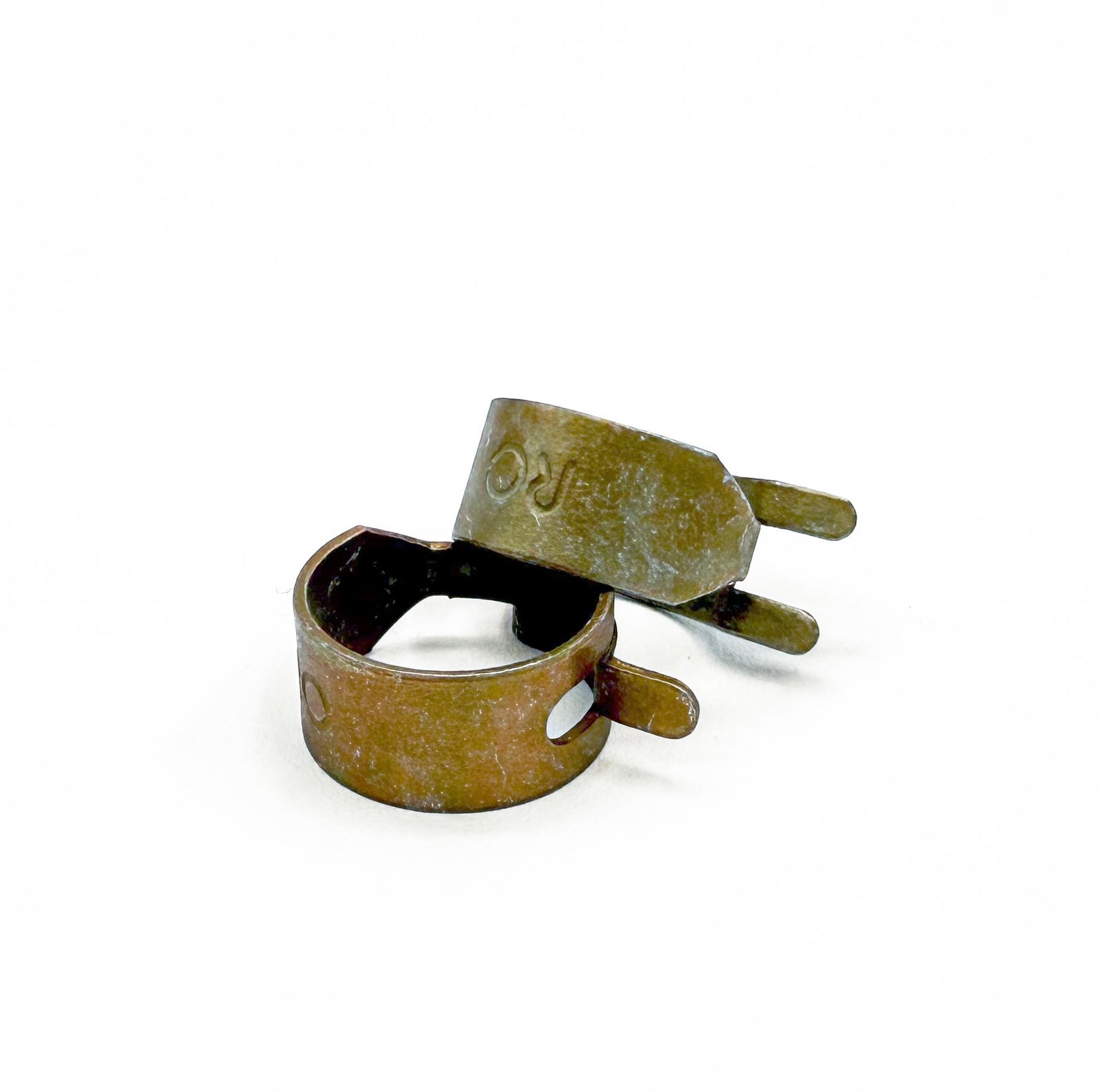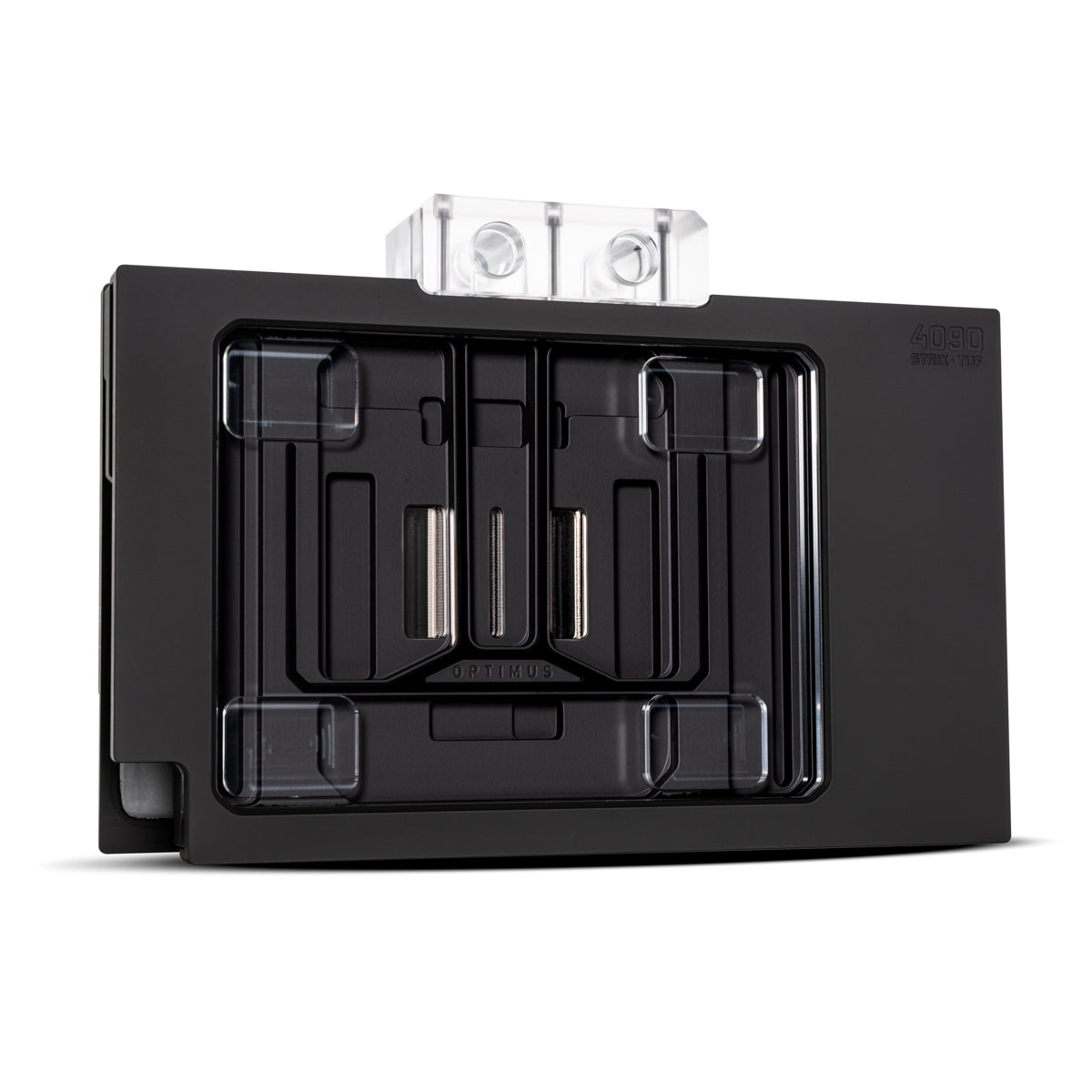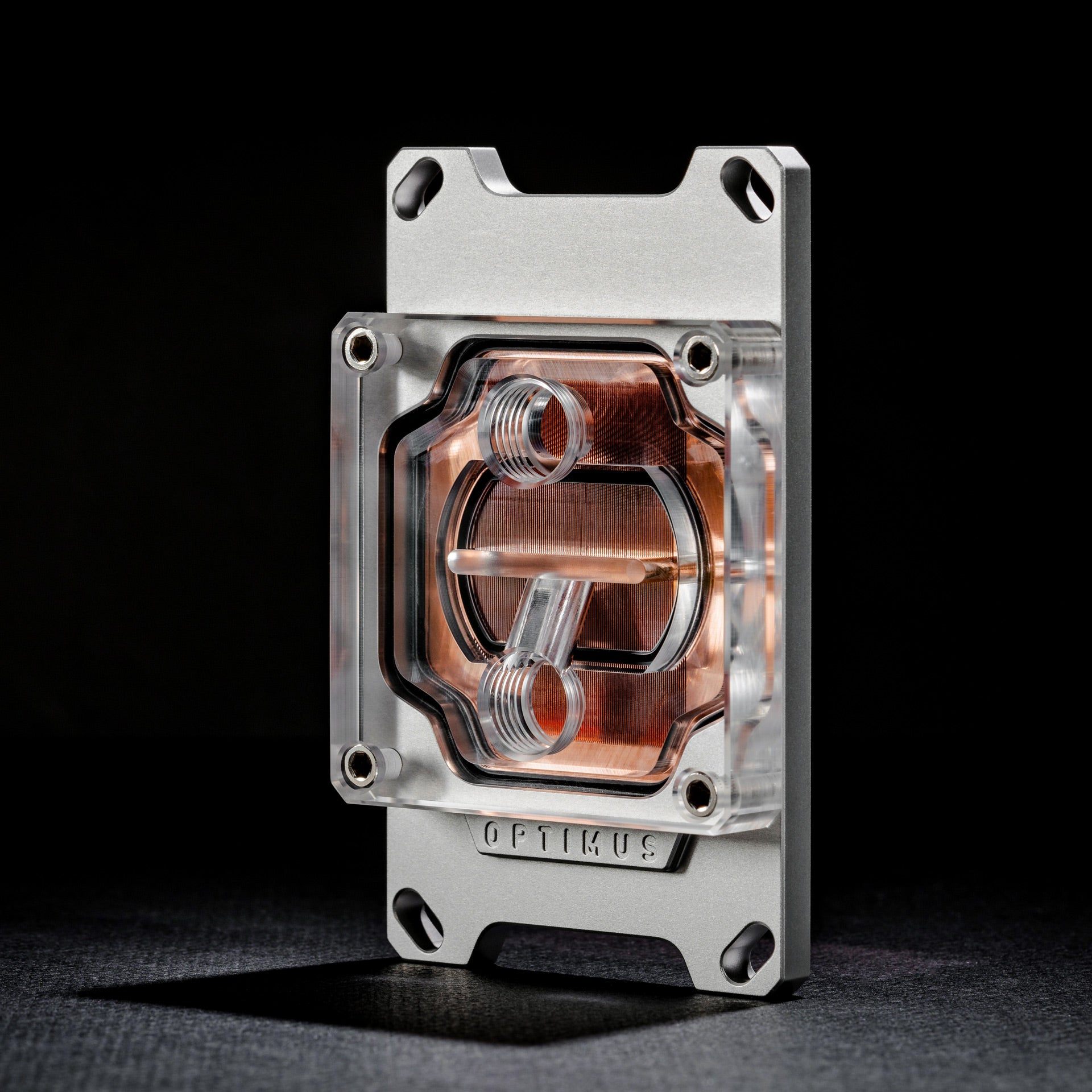CRACK-PROOF CAST ACRYLIC
Optimus uses only cast acrylic from premium name-brand suppliers like genuine Plexiglas® by Arkemaand Polycast™ by Spartech.
Extruded acrylic is the #1 culprit of of cracking in water cooling parts. Extruded acrylic is low cost and easy to make. That’s why extruded is used by nearly every water cooling company.
But extruded acrylic isn’t appropriate for precision parts. Extruded is prone to stress and spider web fractures from machining and expanding/contracting during temp fluctuations. Additionally, injection molded nylon blocks feature similar downsides, including a +/- 10% expansion variation and high fluid retention, all sources of stress. If you’ve ever wondered why ports, block threads and reservoirs randomly fracture, this is why.
Cast acrylic is far harder with excellent machinability and resistance to cracking. Really, cast acrylic is the only real choice for everything from precision machined parts to giant aquariums. Optimus uses only cast acrylic for every single acrylic component. And because quality matters, we use only name brand acrylics like Plexiglas® and Polycast™ that guarantees quality, hardness and chemical resistance.
In fact, our cast acrylic is much stronger than acetal and nearly impossible to break. Feel free to allen wrench your fittings in place, our block won't blink.
DIAMOND POLISHED ACRYLIC
Optimus uses only custom designed diamond CNC acrylic bits to achieve high optical quality while eliminating stress and chemical fractures, rather than buffing or flame polishing.
Flame polishing, combined with extruded acrylic, causes numerous problems. First, flaming (and vapor) polishing works by melting the outer layer of material to achieve a glass-like appearance. While the results look great, melting causes significant damage to the acrylic structure.With flaming, the acrylic becomes highly prone to stress cracking as well as spider webbing from fluids and temp fluctuations. Reddit is filled with horror stories. And flaming has a tendency to turn yellow.
Moreover, by diamond polishing, we're able to achieve higher clarity in places flaming cannot, like the inside of ports and channels. While this is a far more time consuming and challenging process, we believe the results speak for themselves.
100% CNC MILLED ports
Additionally, we only CNC our G1/4” ports, never thread tap. Thread tapping is the industry standard because it’s easy and any budget drill press can do it. Thread tapping works by twisting a threaded drill bit into the material, causing burrs and extreme levels of stress. The resulting thread tapping micro fractures are nearly invisible, until the acrylic meets water, heat and pressure. Then micro turns into macro and cracks appear.
With CNCing (aka thread milling), specialized CNC bits are used to sculpt away the material and make the threads. CNC milling is vastly more accurate and causes far less pressure on the material, but takes much more time and requires high-speed CNC machines. For Optimus, CNC threads is a must.
TRUE BSPP-G1/4" SPEC THREADING
Moreover, with over 50 years making aerospace fittings, we're hyper focused on thread accuracy. All our G 1/4" ports and threads meet BSPP-G specification. This might seem like a small detail, but the accuracy of G 1/4"style fittings and ports on the market varies greatly and can lead to numerous problems like leaks, cracks and cross-threaded material.
Finally, we run a second round of deburring with special deburring bits to make sure there are zero loose burrs in the blocks. Burrs are those leftover sheds of material left from machining. You’ll find them in almost all water cooling products out there. Burrs end up in cold plate fins and often disintegrating into goo. Yes, this is real and all too common.
Ultimately, all these steps combined make our acrylic blocks nearly indestructible. Believe us, we've tried. In fact, trying to break the acrylic with an allen wrench will result in the brass fitting deforming before our acrylic cracks. Really.



